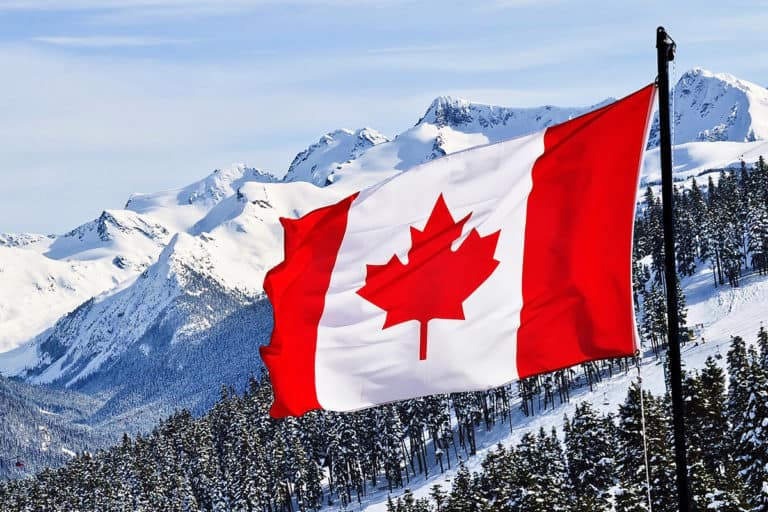The Canadian Charter is part of the Constitution. It plays a starring role in any discussion on discrimination. Here’s an overview of what you need to know.
The Canadian Charter
The previous article quickly outlined the Canadian Constitution. Within the Constitution, and therefore taking centre stage as “the most important law” in Canada, is the Charter of Rights and Freedoms.
The Charter is the starting place for any discussion on discrimination in Canada:
“In one poll conducted on the tenth anniversary of the November 1981 First Ministers’ Conference, Canadians placed the Charter ahead of the national anthem, the flag, the monarchy, bilingualism, and the CBC as an important symbol of Canadian identity. … The Charter stands at the centre of Canadian society as a beacon, a lodestone, a guarantee of freedom and tolerance.”
Reasonable Limits Set In The Charter
The Canadian Charter begins with section 1, a limitations clause, once again throwing us into the uncertain waters of reasonableness:
1. The Canadian Charter of Rights and Freedoms guarantees the rights and freedoms set out in it subject only to such reasonable limits prescribed by law as can be demonstrably justified in a free and democratic society.
Fundamental Freedoms of The Charter
Having built a reasonable safety net as defined by the courts, section 2 goes on to provide a list of fundamental freedoms:
2. Everyone has the following fundamental freedoms:
(a) freedom of conscience and religion;
(b) freedom of thought, belief, opinion and expression, including freedom of the press and other media of communication;
(c) freedom of peaceful assembly; and
(d) freedom of association.
Conflicting Rights
Whatcott, the case about hate speech referenced by the Ward court majority, involved both s. 1 and s. 2 Charter issues. In 2001 and 2002, William Whatcott, on behalf of the Christian Truth Activists, distributed flyers condemning sexual orientation: “Keep Homosexuality out of Saskatoon’s Public Schools!”; “Sodomites in our Public Schools.” Some words in the flyers referred to gay men as pedophiles.
Four people filed complaints with the Saskatchewan Human Rights Commission, and the case went to the tribunal, the trial court, the court of appeal, and finally to the Supreme Court of Canada. The SCC agreed with Whatcott that his right to freedom of religion (and his expression of that religion), protected by s. 2 of the Charter, was limited by the tribunal and lower court decisions. But they found the limitation reasonable under s. 1.
Equality Rights Are The Star of The Show
While sections 3-14 have no bearing on our discussion of discrimination, section 15 equality rights play a starring role. Canadians are equal under the law, but employment equity programs are permitted:
15.(1) Every individual is equal before and under the law and has the right to the equal protection and equal benefit of the law without discrimination and, in particular, without discrimination based on race, national or ethnic origin, colour, religion, sex, age or mental or physical disability.
(2) Subsection (1) does not preclude any law, program or activity that has as its object the amelioration of conditions of disadvantaged individuals or groups including those that are disadvantaged because of race, national or ethnic origin, colour, religion, sex, age or mental or physical disability.
Flexible Interpretation
But wait a minute: Whatcott was a case about hate speech based on sexual orientation, and sexual orientation is not listed as a disadvantaged group. How is that legal?
Documents are a product of their times, and in 1981, equality rights based on sexual orientation were nowhere in the legal picture; it also would have been impossible to list every form of identity that may be subject to discrimination. In a 1989 case, the SCC addressed the issue:
“The grounds of discrimination enumerated in s. 15(1) are not exhaustive. Grounds analogous to those enumerated are also covered and the section may be even broader …”
And in 1995, the Court in Egan v. Canada explicitly added sexual orientation as an analogous ground. As the Government of Canada’s Guide to the Charter explains:
“The Supreme Court of Canada has stated that the purpose of section 15 is to protect those groups who suffer social, political, and legal disadvantage in society. Discrimination occurs when a person, because of a personal characteristic, suffers disadvantages or is denied opportunities available to other members of society.”
Women Force A Change To The Status Quo
Relevant to discrimination but outside of our current discussion are the minority language education rights under section 23, and section 25, which ensures that no rights in the Charter can be used to eliminate or detract from Aboriginal rights and freedoms.
Section 28 is also a product of its times, but in this instance, the times forced a change to the status quo:
28. Notwithstanding anything in this Charter, the rights and freedoms referred to in it are guaranteed equally to male and female persons.
Section 28 was not originally in the Charter. The federal government’s attitude was along the lines of “don’t worry, we mean you, too.” But between 1960 and 1985, the second wave of feminism was strong. They were well aware of the battles fought to win the vote, and to overturn court decisions claiming that “person” in the law did not include them. So women from all walks of life demanded explicit inclusion:
“In February 1981, the Canadian Advisory Council on the Status of Women … planned a conference for women to discuss the potential impact of the entrenched charter of rights being proposed … The federal government cancelled the conference … Feminist groups organized a counter conference and formed a coalition … On 14 February 1981 about 1,300 women met in Parliament to demand a specific clause on equal rights between women and men.”
The political pressure led the federal government to add s. 28 to the Charter that April, although, as you will see, this was not the end of the battle.
The Canadian Charter Only Applies To Government Actions
Of peripheral interest to conversations about discrimination is section 32, which clearly states that the Charter only applies to government actions, not to individuals. Once again, we can refer to Whatcott for a better understanding.
The four complainants who went to the Saskatchewan Human Rights Commission argued that William Whatcott had violated the provincial Human Rights Code. At this stage there is no possibility of arguing a violation of Canadian Charter rights.
Finding enough evidence, the Commission passed the case to the tribunal. When the Tribunal found in favour of the plaintiffs, Whatcott took issue with the decision itself, not with the four individuals. The Tribunal represents the provincial government, so Whatcott could now argue that his Charter rights were being squashed by the government of Saskatchewan. The case name became Whatcott v. Human Rights Tribunal.
The Saskatchewan trial court agreed with the Tribunal, so Whatcott appealed again. This time, the court found in his favour, and it fell to the Human Rights Commission to decide whether or not to ask the Supreme Court to hear the case. This is actually called asking for leave—or permission—to appeal, since the SCC is not obligated to hear the case.
With appellant and defendant now reversed, the final case at the SCC is called Saskatchewan (Human Rights Commission) v. Whatcott, or Whatcott for short. The case remains a Charter issue because the Commission is asking the SCC to review the appeal court’s decision.
"But We Don't Want To": The Charter's Notwithstanding Clause
Section 33 is best understood if we step back in time. In 1981, while there were many individual arguments about the Constitution, two broad issues persisted. The first concerned how the Constitution might be changed, or amended, in the future; the second was the idea of a federal Charter of Rights that would be “forced” upon the provinces.
Some provincial premiers agreed with the idea of a federal Charter, even as they disagreed with what should be included; others were willing to accept it because not including it was a deal breaker for then Prime Minister Pierre Trudeau; others still, felt it was an unnecessary and unwelcome invasion of provincial jurisdiction. For these leaders, the deal breaker was to make a Charter of Rights part of the highest law in the land.
The last-minute compromise was to include a “but we don’t want to” safety net, commonly known as the notwithstanding clause. This would make it legal for governments to override a right contained in section 2 or sections 7-15. And the compromise on this compromise was to legally obligate governments to renew this opt-out every five years:
33. (1) Parliament or the legislature of a province may expressly declare in an Act of Parliament or of the legislature, as the case may be, that the Act or a provision thereof shall operate notwithstanding a provision included in section 2 or sections 7 to 15 of this Charter.
…
(3) A declaration made under subsection (1) shall cease to have effect five years after it comes into force or on such earlier date as may be specified in the declaration.
Fury Unleashed: Pressure Leads To Charter Change
This brings us back to the concern of women’s groups and s. 28, which was originally included within the override. As Ron Graham tells it in The Last Act:
“Bone tired and eager to be done, none of the participants [the Prime Minister, the premiers, and their staff—all men] caught the small detail that would blow up into a major controversy as soon as reports of the deal reached the street. By agreeing to apply the notwithstanding clause (section 33) to equality rights (section 28), the first ministers provoked the full fury of women’s organizations, who feared it would be used not to protect affirmative-action programs but to override gender equality. [Saskatchewan premier] Allan Blakeney, the last holdout against reopening the deal, finally buckled after almost two weeks of demonstrations, petitions, and personal attacks, though his price was to get British Columbia and Alberta to agree to insert the ‘existing’ rights of the aboriginals into the Charter at the same time.”
Decades later, it remains unclear as to what, exactly, s. 28 protects. Is it a stand alone right, or does it only exist in reference to the other protected rights? It seems clear that if a law was introduced to directly exclude women, s. 28 would protect them. But as the Quebec Court of Appeal decided in their review of Bill 21 , if rights are removed from everyone, s. 28 cannot be used to give those rights back to women alone. In this view, it is irrelevant if the right being removed (right to wear religious clothing and symbols) disproportionately impacts women. It is quite likely the SCC will have the final say in this debate.
Historically, the Notwithstanding Clause Was Rarely Used
How have provincial and federal governments used or abused their power? Outside the province of Quebec, the notwithstanding clause had only been used three times in more than forty years, all of them inconsequential: a 1982 Yukon planning and development act that was never proclaimed law; Saskatchewan’s 1984-86 back-to-work legislation that the SCC ultimately found not to be a Charter violation anyway; and an Alberta private member’s bill in March 2000 to define marriage as only between a man and a woman.
This move by the Alberta legislature came during intense national debates and lawsuits to legalize same-sex marriage. It was a political statement more than anything, since the federal government holds the power to define who can marry in Canada. The Alberta legislature’s bill does, however, underline a key concern of critics of the notwithstanding clause:
“It is generally true that governments do not violate rights in defiance of public opinion; rather, it is precisely when the majority of the public is in favour of, or at least not opposed to, the limitation or elimination of the rights of a minority that constitutional constraints are needed.”
The Canadian Charter and Quebec
As for Quebec, during the 1980-81 Constitution meetings, the province was governed by a separatist government wanting to leave Canada, not come to agreement on a Canadian Constitution. Amidst much debate, deal-making, and tension, Quebec never gave its signature to the Constitution Act, 1982 (and still hasn’t until this day). To express their strong opposition to the process, they included a notwithstanding clause in every piece of legislation between 1982 and 1985, even amending existing laws to have it included.
While discontinuing this behaviour post-1985, the Quebec government did use the notwithstanding clause to override a Supreme Court ruling in December 1988, marking the only time s. 33 has been used against the Court. In both Ford and Devine, the SCC found that the Quebec government’s insistence on French-only commercial signs, and thus an outright prohibition on any other language, was an unreasonable limitation on freedom of expression.
Quebec amended their language law to allow bilingual signs inside, but to prevent this amendment from being challenged in the courts, they invoked the notwithstanding clause. Five years later, when it came time for mandatory renewal,
“… the Quebec National assembly lifted the ban on English language signs and amended the law to require only that French be ‘markedly predominant.’ The amended legislation was not protected by a notwithstanding clause.”
But Things Have Changed
But things have change significantly, and since 2017, four provinces have either threatened or invoked the clause nine times:
2017: Saskatchewan promised to use it if courts removed funding for non-Catholic students at Catholic schools. The Appeal Court overturned the trial court ruling, and the SCC refused to hear the case, so the clause was never invoked.
2018: Ontario threatened to use the clause, but chose instead to file an appeal of the trial court ruling that Bill 5, reducing the size of Toronto’s municipal council, was unconstitutional. In a 5-4 decision in 2021, the SCC ruled the Act was constitutional.
2019: Quebec preemptively used the clause to block court challenges to Bill 21. The bill prevents civil servants in positions of authority, including teachers, from wearing religious symbols. The appeal included a s28 challenge.
2019: the New Brunswick premier added the notwithstanding clause to a bill that would have disallowed non-medical exemptions for mandatory vaccines. The bill did not pass in the legislature.
2021: Ontario used it to restrict third-party spending one year before an election. When the original law was challenged and found unconstitutional, the government reintroduced it using the notwithstanding clause. It was successfully challenged under a different section of the Charter. The SCC has agreed to hear the case.
2022: Ontario wrote the clause into Bill 28, which prevented education workers from negotiating or striking. The teachers went on strike anyway; one week later, Premier Doug Ford promised to rescind the bill if the CUPE employees returned to work. They did, and negotiations continued with a mediator.
2023: Quebec once again used the clause preemptively, this time on Bill 96, restricting English language rights.
2023: Saskatchewan invoked the clause on Bill 137 after a trial judge issued an injunction until an upcoming legal challenge could be heard. The bill requires schools to obtain parental consent before using a change in pronouns or preferred names for children under 16.
2024: Quebec re-invoked the clause on Bill 21 before the 5-year limit expired. The following month, the Quebec Court of Appeal found the bill—and the preemptive use of the clause—constitutional. It is expected to be appealed to the SCC.
"Political Accountability Is The Best Safeguard"
In 1982, the Honourable Roy McMurtry, a participant in the drafting of the Constitution, believed
Over forty years later, law professor Louis-Philippe Lampron spoke of the changing times:
Significant Concerns with the Changing Times
One significant concern is its preemptive use:
Another is its attack on fundamental minority rights:
Opposed to preemptively invoking the clause, prime minister Justin Trudeau has said his government will intervene when Bill 21 reaches the SCC and ask for clarity on when it can be invoked.
Indigenous Rights
To close, we come to section 35 of the Charter, and the protection of Indigenous rights:
35. (1) The existing aboriginal and treaty rights of the aboriginal peoples of Canada are hereby recognized and affirmed.
(2) In this Act, “aboriginal peoples of Canada” includes the Indian, Inuit and Métis peoples of Canada.
(3) For greater certainty, in subsection (1) “treaty rights” includes rights that now exist by way of land claims agreements or may be so acquired.
(4) Notwithstanding any other provision of this Act, the aboriginal and treaty rights referred to in subsection (1) are guaranteed equally to male and female persons.
Always Existed, Finally Recognized
Section 35 was also not part of the original draft, only being added after two years of Indigenous campaigns and protests:
“It took two years and the raising of concerns before an international audience, including the United Nations and the British Parliament, before the Canadian government finally agreed to include Aboriginal rights in the constitution.”
Indigenous peoples make it clear that, unlike some of the other protected rights, Aboriginal rights were not created by the Constitution: they have always existed, even if they were not honoured by the European majority. Section 35 only means that the rights must be legally recognized.
Defining and Limiting: The Supreme Court Is In Charge
While existing Indigenous rights are protected, they are not defined. Once again charged with this task, the SCC has found them
“to include a range of cultural, social, political, and economic rights, including the right to land, as well as to fish, to hunt, to practice one’s own culture, and to establish treaties.”
Section 35 is found in Part II, outside the Charter, intentionally excluding it from both the s. 33 notwithstanding overrides, and the reasonable limitations clause of s. 1. To determine reasonableness for Indigenous cases, the SCC, in R. v. Sparrow, established the Sparrow test. The Court also called for a flexible interpretation of the phrase “existing aboriginal rights” to allow them to evolve over time.
It's Your Charter
Throughout the 1980s, courts were kept busy interpreting Charter rights, often called upon to draw the line between the rights of one person or group and another. The trial and appeal courts would make the first attempt, but the SCC had the final word. While discussing the heavy workload of a Supreme Court justice, retired Chief Justice Beverley McLachlin shared a conversation from 1989, when she was new to the Court:
“‘It used to be worse,’ Justice Antonio Lamer assured me. ‘In the early days of the Charter, we had hundreds of cases on the docket. There were no precedents, no rules to tell us how to interpret them.'”
Whether you are a life-long Canadian or a short-term visitor, if you are on Canadian soil, you are protected by s. 15 Charter rights. You are also granted freedom of expression and freedom of assembly under s. 2. When those rights clash, the courts decide, on a case-by-case basis, which right or freedom will rule the day.



